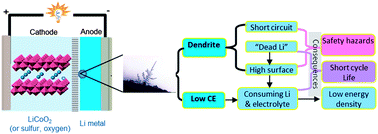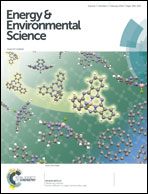Lithium metal anodes for rechargeable batteries
Abstract
Lithium (Li) metal is an ideal anode material for rechargeable batteries due to its extremely high theoretical specific capacity (3860 mA h g−1), low density (0.59 g cm−3) and the lowest negative electrochemical potential (−3.040 V vs. the standard hydrogen electrode). Unfortunately, uncontrollable dendritic Li growth and limited Coulombic efficiency during Li deposition/stripping inherent in these batteries have prevented their practical applications over the past 40 years. With the emergence of post-Li-ion batteries, safe and efficient operation of Li metal anodes has become an enabling technology which may determine the fate of several promising candidates for the next generation energy storage systems, including rechargeable Li–air batteries, Li–S batteries, and Li metal batteries which utilize intercalation compounds as cathodes. In this paper, various factors that affect the morphology and Coulombic efficiency of Li metal anodes have been analyzed. Technologies utilized to characterize the morphology of Li deposition and the results obtained by modelling of Li dendrite growth have also been reviewed. Finally, recent development and urgent need in this field are discussed.


 Please wait while we load your content...
Please wait while we load your content...